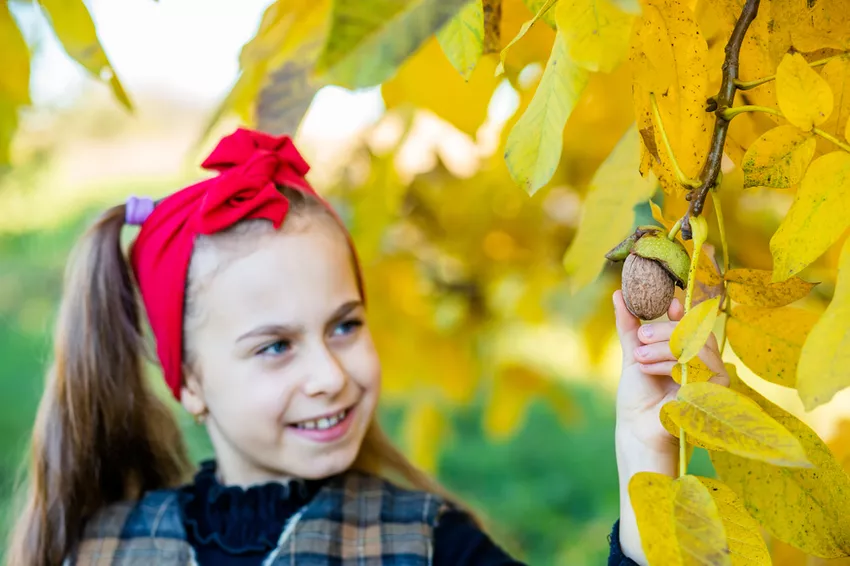- Fruits possible from the second year
- When does the walnut tree harvest time begin?
- Instructions: How to harvest walnuts correctly
Walnuts are delicious sources of energy. If you are lucky enough to have a healthy and strong walnut tree in your own garden, you can look forward to rich harvests over the years. This article provides you with all the important information about harvesting walnuts correctly.
 The walnut harvest begins in autumn
The walnut harvest begins in autumn
Fruits possible from the second year
Don't expect to harvest walnuts in the first year after planting your walnut tree. From the second year, however, a carefully tended tree has a good chance of bearing strongly.
When does the walnut tree harvest time begin?
The walnut harvest season begins at the end of September. It is very easy to recognize ripe fruits: they have a green-brown and burst - i.e. cracked - skin.
Note: When the walnuts are ripe (have developed their full flavor), they will fall off the tree by themselves or if you shake them lightly.
Instructions: How to harvest walnuts correctly
While special vibrating and sweeping machines are usually used to harvest the walnuts in commercial cultivation, you have to do this task manually in your garden.
Important: You do not need a ladder to harvest the walnuts. A catch net with an extendable telescopic handle is also superfluous.
In general, you should refrain from chopping off the walnuts. This would only damage the tree shoots and affect next year's harvest.
In short: it is best to wait until the fruit has fallen down by itself. Then all you have to do is collect them. So they pick up the nuts rather than harvest them. Gentle shaking of the tree is allowed to force the fall.
- Mow the grass around the walnut tree in time. Otherwise you may have to look for the walnuts in tall stalks (unnecessary effort).
- Collect the fallen, ripe walnuts regularly. On rainy days you should be extra diligent and check the situation both in the morning and in the afternoon.
- Do not store black walnuts.
- Wear rubber gloves when harvesting the fruit.
Additional tips for harvesting walnuts
- The main purpose of constantly collecting the fruit is to keep uninvited guests away from the tree. If you leave the nuts, they offer an ideal breeding ground for parasites and other pests (rapid reproduction of the same).
- Also, pick up and discard damaged walnuts (same reason as above). Only rotting/stained nuts are suitable for the compost, while those with caterpillars should be placed in the bio bin (to avoid spreading overly voracious insects to other types of fruit).
- It's not just us humans who love walnuts, squirrels and mice also really appreciate the fruits. Treat the little animals to some nuts if you have a rich harvest.
- In order to preserve walnuts and store them for a longer period of time, you must dry the nuts in a warm and dark room immediately after harvesting.